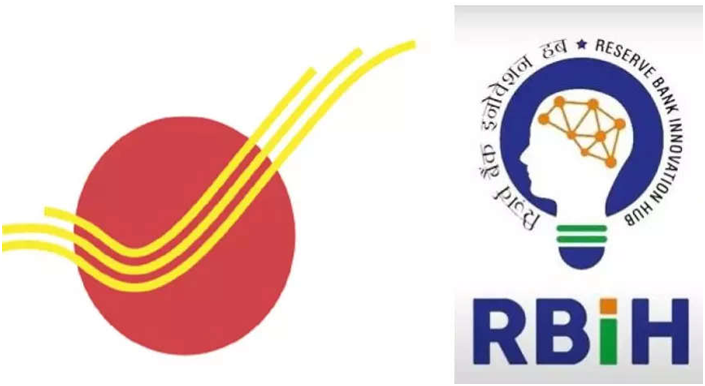India Post Payments Bank (IPPB) and Reserve Bank Innovation Hub (RBIH) Collaborate for innovations in Financial Product and Services (GS Paper 3, Economy)

Why in news?
- India Post Payments Bank (IPPB) and Reserve Bank Innovation Hub (RBIH) have come together to focus their efforts on enhancing the reach of financial solutions to large sections of society across India and enabling frictionless finance to a billion Indians.
Why it matters?
- In the last decade, India has witnessed rapid advancement and adoption of mobile technology at low data usage cost.
- However, there remain large sections of the population as well as micro and small businesses that have limited access to essential financial services and expertise. Universal access to finance is one of the critical requirements for society’s inclusive development.
- To this end, IPPB and RBIH will plan, design and execute innovative products and offerings to bridge the existing gap by bringing digitalised services at the customer’s doorstep.
Impact:
- The collaboration between IPPB and RBIH will explore projects which shall have impact on the masses by:
- Leveraging the deep rural reach of IPPB-Department of Posts (DoP) to take Rural Finance to a billion Indians.
- Enabling access to sustainable and secure finance services to every segment of the society, through research and innovation.
- Additionally, IPPB shall be an active participant and partner with RBIH on initiatives of national importance led by RBIH
About RBIH:
- The Reserve Bank Innovation Hub (RBIH) is a wholly-owned subsidiary of the Reserve Bank of India (RBI) set up to promote and facilitate an environment that accelerates innovation across the financial sector.
- RBIH will provide the platform to anchor a shared vision among all financial ecosystem stakeholders and aid them in crafting forward-looking innovation strategies while addressing the most pressing issues in the Indian financial sector.
- The organisation serves as a focal point to position India as a global innovation hub for a network of financial services providers, fintech innovation hubs, policymakers, technologists, academia, and the investor community.
- The network will be empowered to ideate, incubate new capabilities, and enable access to sustainable, secure, and frictionless financial services for over a billion Indians.
About IPPB:
- India Post Payments Bank (IPPB) has been established under the Department of Posts, Ministry of Communication with 100% equity owned by the Government of India. IPPB was launched by the Hon’ble Prime Minister Shri Narendra Modi on September 1, 2018.
- The bank has been set up with the vision to build the most accessible, affordable and trusted bank for the common man in India.
- The fundamental mandate of IPPB is to remove barriers for the unbanked and under-banked and reach the last mile leveraging a network comprising 160,000 post offices (145,000 in rural areas) and 400,000 postal employees.
- IPPB’s reach and its operating model is built on the key pillars of India Stack - enabling Paperless, Cashless and Presence-less banking in a simple and secure manner at the customers' doorstep, through a CBS-integrated smartphone and biometric device.
Indigenous trainer aircraft HTT-40
(GS Paper 3, Defence)
Why in news?
- Recently, Prime Minister unveiled HTT-40, an indigenous trainer aircraft designed and developed by Hindustan Aeronautics Limited (HAL), at the India Pavilion during 12th DefExpo in Gandhinagar, Gujarat.
- The aircraft has state-of-the-art contemporary systems and has been designed with pilot-friendly features.
- With over 60 per cent in-house parts and collaboration of private industry, it is a shining example of the vision of ‘Aatmanirbhar Bharat’.

Key Features:
- Built around a meticulously-tested turbo-prop engine, the aircraft is equipped with the latest avionics, an air-conditioned cabin and ejection seats.
- It boasts of unique features like running change-over of pilots, hot-refuelling and short-turnaround time.
- The HTT-40 would be used for basic flight training, aerobatics, instrument flying and close formation flights whereas its secondary roles would include navigation and night flying.
- It is a testament to the cutting-edge technology designed to meet primary training requirements of the Indian defence services.
Trials:
- All the tests required for certification were completed in record six years from the first flight.
- The HTT-40 has completed all systems tests, all PSQR performances, hot weather, sea level and cross wind trials and user assisted technical trials. It demonstrated rain water resistance.
- Provisional clearance for airworthiness of the aircraft is received from Centre for Military Airworthiness and Certification (CEMILAC).
Draft of National Credit Framework (NCrF) launched
(GS Paper 2, Education)
Why in news?
- Recently, the Ministry of Education launched the draft of National Credit Framework (NCrF) for public consultation.
.png)
What it offers?
- Taking the vision of the new National Education Policy (NEP) the National Credit Framework (NCrF) has been developedto enable the integration of academic and vocational domains to ensure flexibility and mobility between the two.
- NCrF would be a game changer by opening numerous options for further progression of students and inter-mingling of school and higher education with vocational education and experiential learning, thus mainstreaming skilling and vocational education.
- NCrFwill also enable students who have dropped out of the mainstream education to re-enter the education ecosystem.
Key Highlights:
- NCrF will seamlessly integrate the credits earned through school education, higher education and vocational and skill education by encompassing the National Higher Education Qualification Framework (NHEQF), National Skills Qualification Framework (NSQF) and National School Education Qualification Framework (NSEQF).
- It also supports educational acceleration for students with gifted learning abilities and Recognition of Prior Learning for the workforce that has acquired knowledge and skills informally through the traditional family inheritance, work experience or other methods.
Proposed benefits for various stakeholders are as follows:
Students:
- NCrF will ensure Flexibility in the duration of study/ courses through provisions of multiple entries and exit/work options as well as pave the path for creditisation of all learning hours, including academic, vocational and experiential learning.
- It will also give the provision for lifelong learning – any time anywhere learning: It will also help students by:
- Establishing multidisciplinary and holistic education with flexible curricula
- Removing the hard distinction between the education stream and making study choices respectful, allowing for more than one award in the same period
- Removing the distinction between arts, science, social sciences, commerce, etc
- Giving student credits for every academic/ skill/ experience
- Enhancing the scope of core learning to include foundational and cognitive both
Institutions:
- NCrF will bring about a unification of higher education institutions to promote multidisciplinary education, creating a diverse and rich students knowledge base.
- It will also help in:
- Promoting stronger collaboration between institutions
- Making credit mechanism simpler and uniform
- Increasing focus on research and innovation
- Promoting digital learning, blended learning, and open distance learning
- Leveraging the institutional infrastructure
Government:
- NCrFis expected to assist the government to increase the enrolment of students, helping to fulfil the national vision of complementing the demographic dividend and transforming India into the Skill Capital of the World.
- It will also:
- Making vocational education and training/ skilling aspirational
- Highly educated and trained workforce for Aatmnirbhar Bharat
Industry:
- NCrF will allow students to attain NSQF-approved foundational skills developed by industry and be more employable. The provision of micro-credentials will allow integration of quick educational upgradation/ up-skilling.
- It will also help in:
- Re-Skilling and up-skilling of existing employees/ engineers.
- Making students more employable by enabling a more holistic design of the study.
- Creating a multi/ cross-sectoral skilled pool of employable youth.
EU confers the Sakharov Prize 2022 to ‘brave people’ of Ukraine
(Miscellaneous)
Why in news?
- Recently, the European Parliament awarded its annual Sakharov Prize for ‘Freedom of Thought’, a prestigious human rights prize to the Ukrainian people to honour their ongoing fight against the Russian invasion of their country.
- European Parliament said, “This award is for those Ukrainians fighting on the ground, for those who have been forced to flee, for those who have lost relatives and friends, for all those who stand up and fight for who and what they believe in.”
Other nominees:
- Other nominees for 2022 award included Wikileaks founder Julian Assange who is still in jail and “Truth Commission”, a body formed in Colombia, which began in 2018 and investigated atrocities committed during the country’s five-decade conflict that ended in 2016.
About Sakharov Prize for Freedom of Thought:
- The Sakharov Prize for Freedom of Thought is named after the Soviet dissent Andrei Sakharov.
- Since 1988 has been awarded annually to individuals and organisations for defending human rights and freedom.
- Notably, this prize was awarded to Kremlin critic Alexei Navalny in 2021.
- Past laureates also include South African President Nelson Mandela, Pakistani education activist Malala Yousafzai and Belarus’ democratic opposition.





.png)
